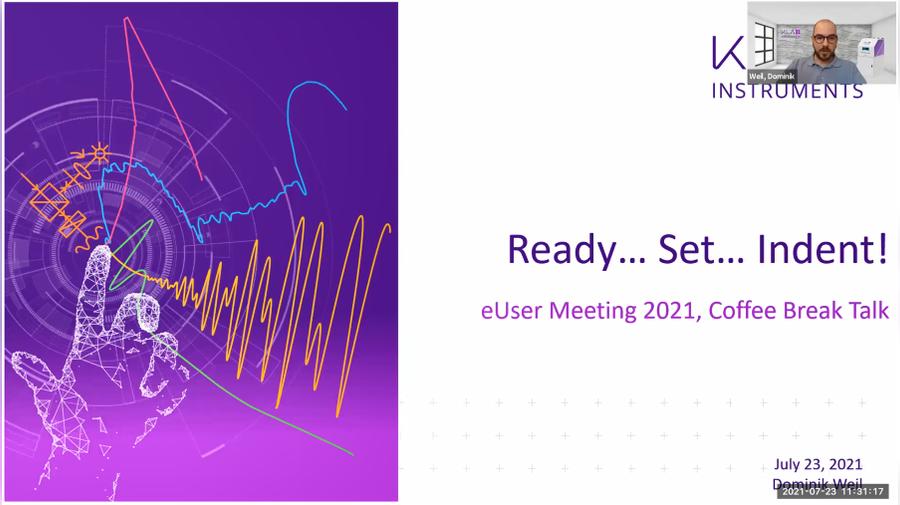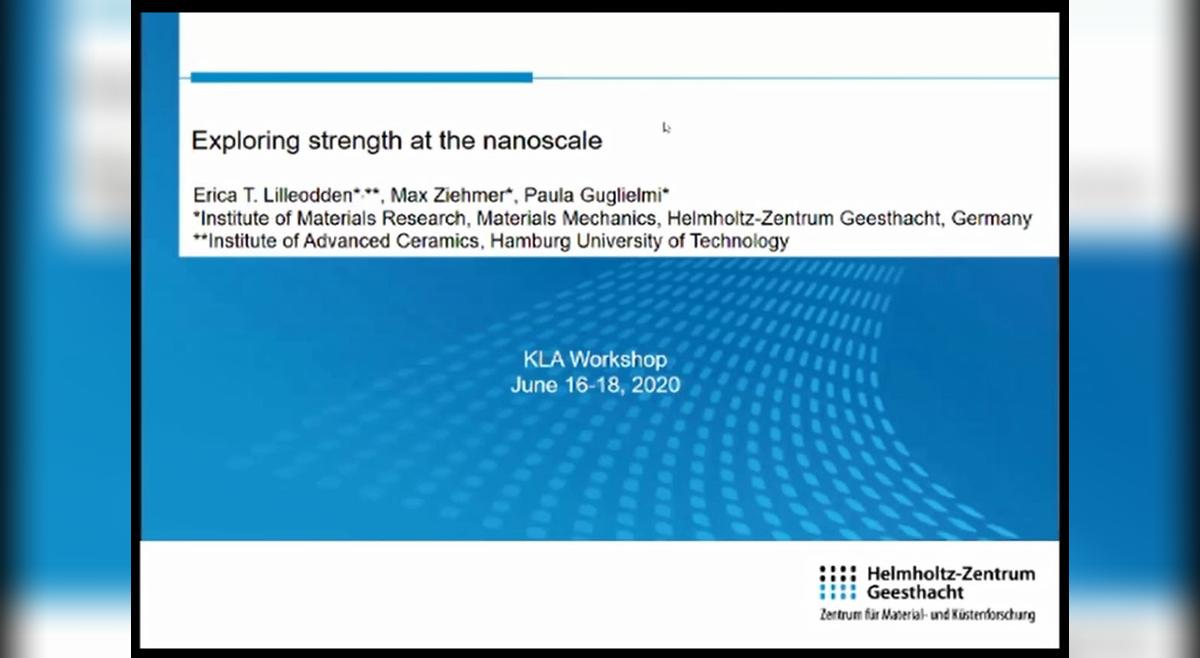20:49

Dominik Weil of KLA Instruments presents fun and unusual nanoindentation applications.
50:51

Jenny Hay of KLA Instruments discusses nanoindentation for biomaterials, and Dr. Riaz Akhtar of the University of Liverpool discusses his work in the Micromechanics of Cardiovascular Disease.
22:54

Coffee Break #4: Bryan Crawford of KLA Instruments discusses methods for clustering NanoBlitz 3D nanoindentation data.
50:17

Dominik Weil of KLA Instruments discusses creep influence, and Professor Karsten Durst of the Technische Universtat Darmstadt discusses a novel technique for analyzing nanoindentation creep using contact contact pressure.
26:03

Coffee Break #3: Jennifer Hay of KLA Instruments demonstrates how to create a fatigue test method using the InView Method Editor.
48:08

Ph.D student Edoardo Rossi of Roma Tre University presents his work on fracture toughness of FIB-milled and 3D printed pillars. Dr. Marco Sebastiani of Roma Tre University then presents his work with superhydrophobic nanopatterned materials.
19:32

Coffee Break #2: Frank Zhang of KLA Instruments discusses basic setup and operation of the InView Method Editor for designing custom experiments.
23:35

Coffee Break #1: Dominik Weil of KLA Instruments discusses techniques and applications beyond standard nanoindentation methods.
30:37

Dr. Warren Oliver provides an overview of applications in nanoindentation and examines recent research on high resolution mechanical properties mapping.
40:44

Dr. Erica Lilleodden provides an excellent in-depth analysis of strengthening mechanisms and deformation at the nanoscale.
28:55

Thin film layers control is extremely important to many technology-based industries. We will look by means of industry examples at two principal optical measurement types; spectral reflectometry and optical profilometry. The aim is to provide you with clarity into the physical working principles, when to use these techniques, and how to apply them to a variety of samples.
Thin-film interferenc...
10:33

Intrinsic hardness of each constituves phases of PcBN were evaluated. Three main hardness peaks were assessed which attributed to TiN binder, cBN particles and composite like phase. Hardness of cBN particles may vary in terms of Boron/Nitrogen ratio.